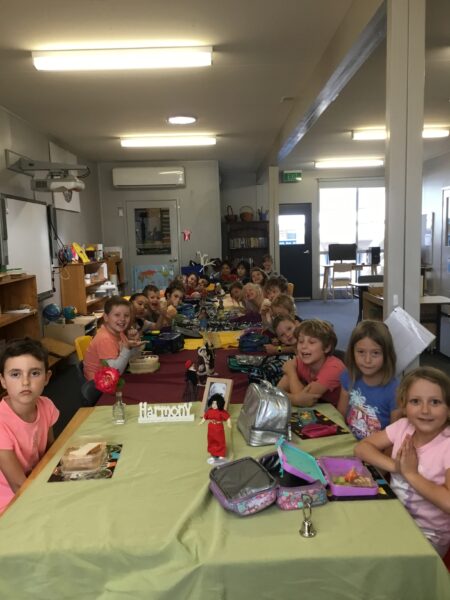Harmony Day is a core component of our peace curriculum. We recently had a fantastic time celebrating Harmony Day within all our classes, even Upper Primary who enjoyed incorporating activities within their camp program. Activities included creating hand prints with our family history on them, creating peace flowers, wearing orange, making peace bracelets, singing songs for peace, retelling family stories, making peace pigeons, creating harmony hearts, discovering where our class mates come from, researching people from around the world, using the continent boxes, creating Aboriginal dot paintings and telling Indigenous stories.
Montessori education has been addressing peace education for over a hundred years. Sometimes the lessons are direct; at other times they are more subtle. The mission is always clear: we want children to have a wide view of the world. We want them to appreciate the diversity of others. We want them to have the tools to navigate this world peacefully. We talk about what it means and what it looks like and what children can do to become peacekeepers. But, perhaps more importantly, we model. Through our words, the tone of our voices, and with our actions, we show children what it means to be peaceful.
Even from a very young age, Montessori children are taught geography through the lens of the whole world. They learn about the continents when they are as young as three years old.
Primary aged Montessori children enjoy many lessons with timelines. They learn about the origins of humanity, and studying ancient cultures is fascinating for them. One important series of lessons in the primary years teaches the fundamental needs of humans. Children explore how groups of people around the world and across the ages meet and have met their needs. Physical needs, such as food, shelter, defence, and transportation are considered, as well as spiritual needs like art and religion.
Montessori teachers are equipped to give children skills to resolve conflicts. We give children tools such as the Restorative Practices approach and give them the words and actions to express their needs and feelings while listening to those of others. In our classrooms, children often learn a variety of self-calming strategies which might include mindfulness meditation, yoga or breathing exercises. Our classes are not structured with rigid time periods and this enables having discussions in the moment. For example, if a group of children are experiencing difficulty resolving a problem together, the teacher is able to stop and sit with them. Without feeling rushed, they can take the time to figure out what went wrong and how to make it right. Instead of an adult doling out consequences, we have the time to sit and work through conflict authentically.
Within our Adolescent Program, Montessori students are encouraged to give back to their community. These acts of charity will often be inspired by the student’s ideas. Students may collect food and supplies for a local animal shelter, or make and sell baked goods to benefit a cause they believe in. By supporting students with logistics, we can encourage them to learn how to be active and supportive members of their communities at a young age. They learn the importance of volunteering and contribution to others. Giving back is just one way a child begins their active role as a peaceful member of society.
How can you give back this Easter?
Have a wonderful term break and we look forward to seeing everyone in Term 2.
Vanessa






